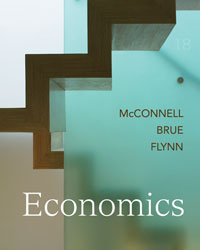| 2 |  | 
CALCULATING TAXES AND DETERMINING AVERAGE RATES The Internal Revenue Service provides current tax-rate tables online at
www.irs.gov. Enter Tax Tables in the search line and find 1040 Instructions (Tax Tables) for the latest tax year. Find the tax payment you would owe if you were a single taxpayer with a taxable income of (1) $23,360, (2) $46,200, and (3) $85,010 in the taxable year. Compare the average tax rates (taxable income/tax payment) for the three levels of income. Next, suppose that you live in a state with a 7 percent sales tax and that you spent 90 percent of your taxable income in the year. How much total sales tax would you pay at each income level? Add the total sales tax to the income tax for each income level and compute new average tax rates based on the combined income tax and sales tax as a percentage of taxable income. Compare the new percentages with the previous ones. What can you conclude from the comparison? (We are assuming that you take the standard deduction on your Federal income tax form and thus do not claim a sales tax deduction.) |





